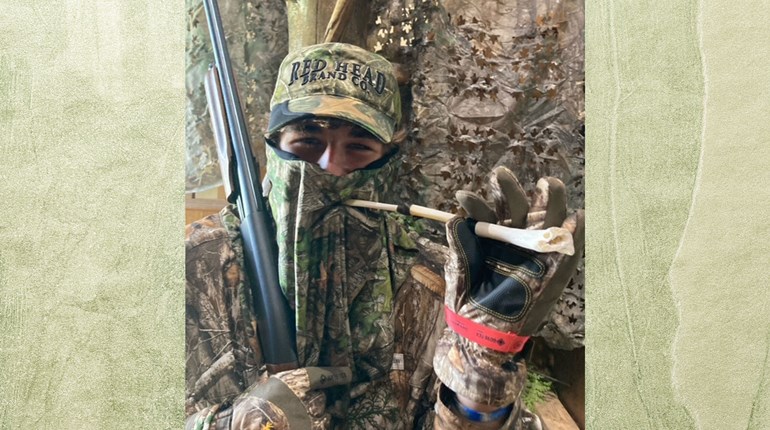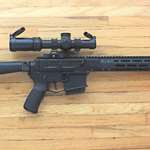
As I get ready to head out for one of my annual assaults on Meleagris gallopavo, I note that early spring weather is the norm—rain, some snow, and high winds. The rain and snow I can deal with, but the wind? How do you kill gobblers when the wind is blowing like a banshee?
Here are some tips from two of America’s best-known gobbler getters, David Hale and Harold Knight—the Knight & Hale game calling team.
1. "You have to remember that in the wind it's hard for you to hear, but it's also hard for the gobbler to hear," said Hale. "That being the case, you have to ask yourself, 'Where can I hear best?' In the rolling hills, you can hear best down low, in the hollows, because the wind is blowing hardest over the top of you. Also, the turkeys are probably in hollows or on lee hillsides getting out of the wind, too. So that's where you want to concentrate your efforts."
2. Because you will have trouble hearing a gobbler's response to your calling on windy days, the bird will often be on top of you before you do hear him. That makes it seem like the turkey is coming to your calling quicker than on a calmer day.
"Also, the old tom is afraid the hen—you—will get out of hearing distance in a hurry, and he doesn't want to miss out on the action," Hale said. "That means he'll often come at a trot instead of stalking the call like they so often do. The smart hunter will set up and be ready before he starts calling on days like this, to keep from being run over."
3. "Under windy conditions, turkeys will look for company more readily than on calm days," Knight said. "That's because the wind spooks them and there's always safety in numbers for them. So don't be surprised if the gobblers are already bunched up, or you run into a gaggle of jakes, or there are more hens together than you'd normally expect when it's a calm day. That just gives them more eyes to see you carelessly tromping around the woods, so be sure to keep your eyes open and move slowly."
4. The right type of camouflage clothing is important on windy days, too.
"Most people don't think about this, but you should never wear loose-fitting camo clothing, like a large, floppy face mask or overly-baggy shirts, that might flap in the wind and draw extra attention to a turkey's eyes," Hale said. "If you wear a face mask, tie it down good to keep it from flapping. And I certainly would not use a blind that had any sort of flopping to it. The thing you have to remember is, yes, gobblers are looking for that hen they've heard, but they are always more cautious about movement and danger, especially in a wind that makes them nervous to begin with."
5. On windy days, decoys can be a tremendous asset. That's because while it's harder for a gobbler to hear your calling, the wind doesn't affect his eye sight.
"You do need a decoy that's stiff enough to offer some resistance to the wind," Knight said. "You can't have the decoy spinning wildly around on the stake. That's why a full-bodied decoy usually works best in a stiff breeze. Or, I like to take the lightweight, fold-up type decoys and use them without a stake, weighing them down with rocks placed inside the body cavity. By placing them up on a dirt mound or clump of brush, they're still visible to the turkeys, but without the stake they won't spin around unnaturally. And the rocks keep them from blowing off down the field like tumbleweeds."
6. While both Harold and David like to hunt hollows and creek bottoms on windy days, they also like field edges. That's because the increased visibility they get helps make up for the lack of hearing. Also, both believe that the gobblers will come to the strutting zones in the fields sometime during the day.
"When you're working the countryside and can get to the edge of a field, try to stay back in the woods and get maybe 10 to 15 feet higher than field level," Hale said. "Use your binocular to spot birds a long ways off both in the field and along the edges of the woods, then try and slip down around and get closer to the birds, slide down to the edge of the field, and set up before calling. Normally on calmer days I wouldn't do that, because it's risky, but on calmer days I can hear well and don't have to try this trick. But on windy, noisy days sometimes I have to hear with my eyes instead of my ears, and seeing the birds first is a big advantage."
You have to time your movements along the field edges when a gobbler is out in the open field.
"When you spot a turkey in the field, you'd be surprised how much of the time the gobbler will keep his back—and his tail feathers—pointed into the wind," Knight said. "That makes it easier for him to display that big fan. It also makes it easier for you to move in on him without fear of him dropping those feathers and seeing you."
"There are few sure things in hunting, but one of them is that conditions are rarely perfect to go out and chase turkeys around," Hale said. "Most of the time there's something going against us. You have to be able to overcome those obstacles to be successful. When the wind's blowing, instead of staying home I say, 'Come on!', because I know we can sneak along a field edge or find us a nice, tucked-away little hollow where they'll be doing their thing. And with everyone else watching TV and drinking coffee, that's just less competition for me to deal with."




































